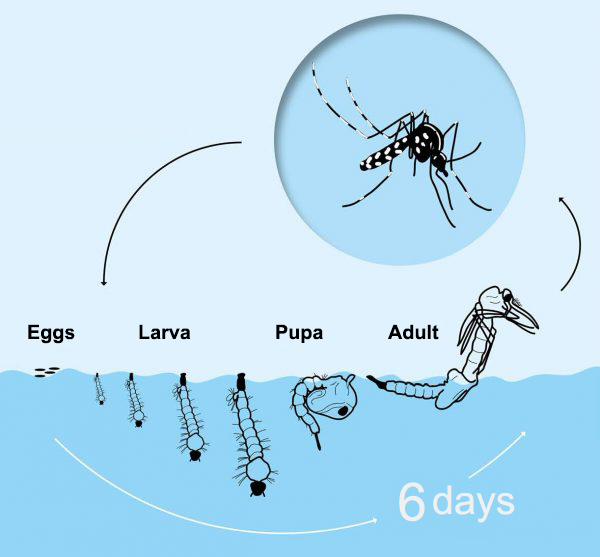MOSQUITOES
LIFE CYCLE LIFE CYCLE Tooltip Link1
The life of a mosquito takes place in four distinct forms: egg, larva, pupa and adult. The tiger mosquito egg must be put in water to hatch and give birth to a larva. The larva feeds by filtering organic matter and passes through four larval stages, each time separated by a moult. The larva then changes into a nymph, a stage during which metamorphosis occurs, and during which the mosquito does not feed. Once the metamorphosis is accomplished, the pupa's envelope opens to let the adult, male or female, emerge. From an aquatic phase, the mosquito then passes to an aerial phase.
Shortly after emergence, males and females will mate. Females usually mate only once in their life and store sperm in specific organs, the spermathecae. Once fertilized, the female will go in search of a host (man, mammal, bird…) to bite. The blood collected provides the female with the proteins necessary for the development of her eggs. After three or four days, the eggs mature. The female then searches for a larval nest to lay her eggs. This sting-laying cycle (called the gonotrophic cycle) is repeated until the insect dies.
Thus, only females bite. The males, on the other hand, feed only on sweet juice and nectar. Every female has her own preference. Some prefer to bite a cow, some a sheep and others prefer a bit of bird blood. The mosquito species that people have on their menu find us by means of the scent trail that we have mapped out ourselves. The carbon dioxide that we exhale and all kinds of sweat smells that we emit in combination with the heat of our body makes many people irresistible.
